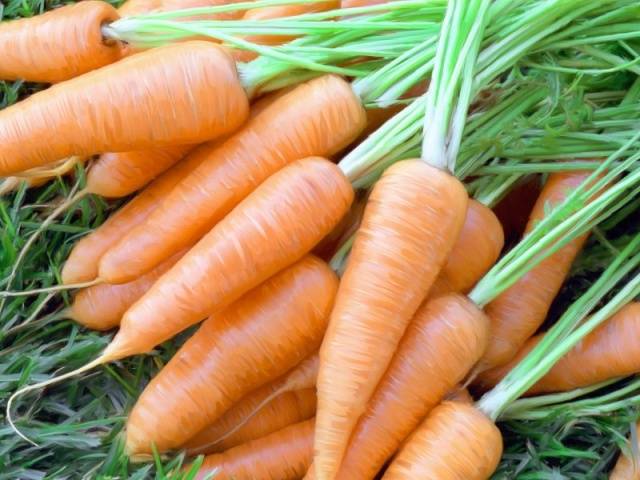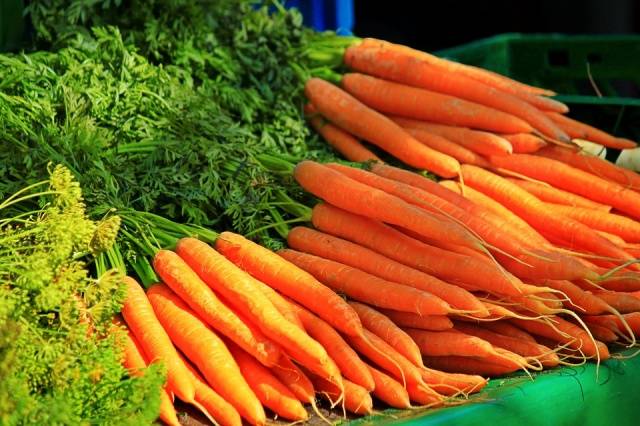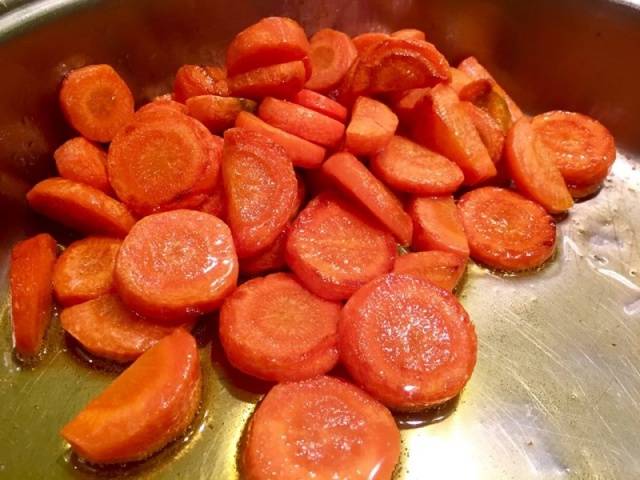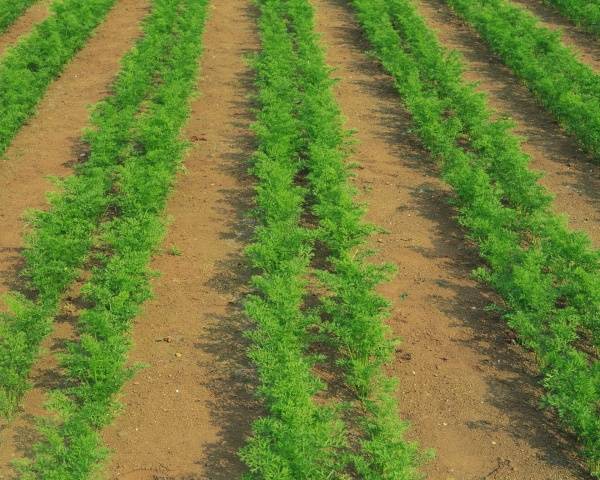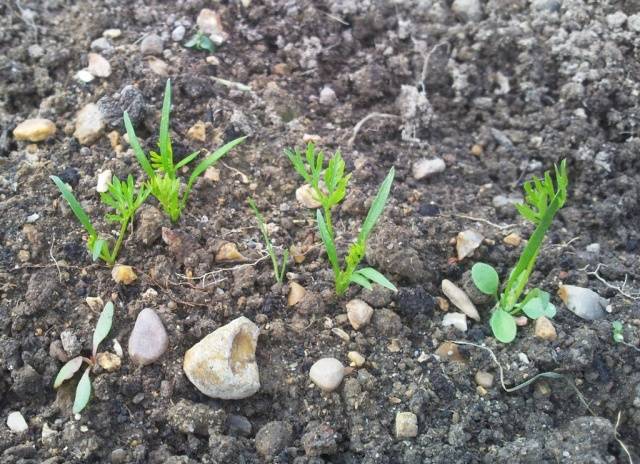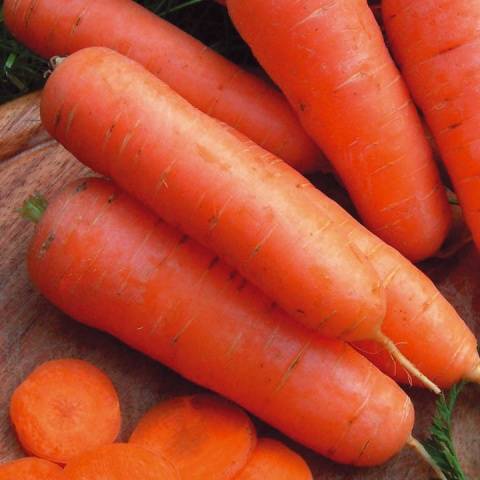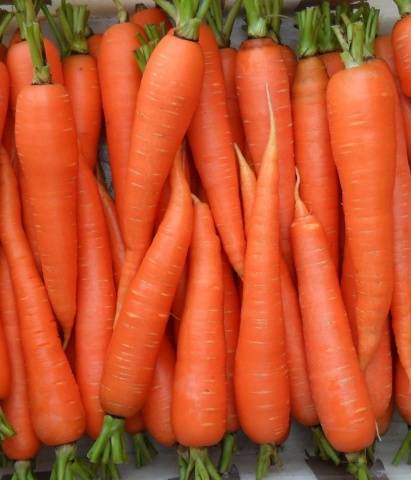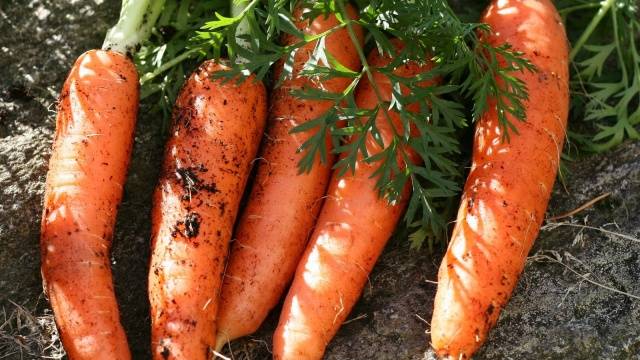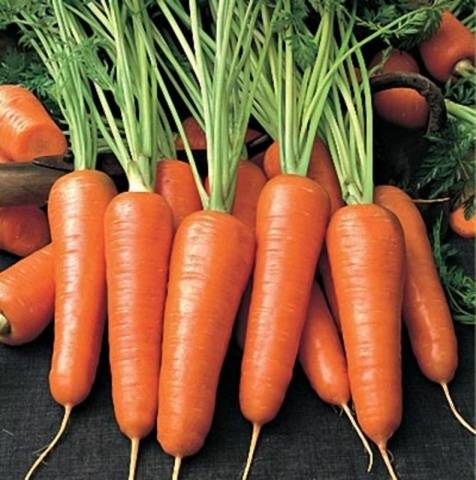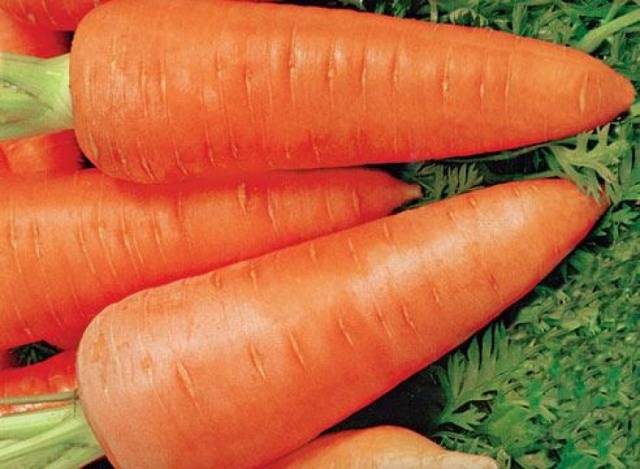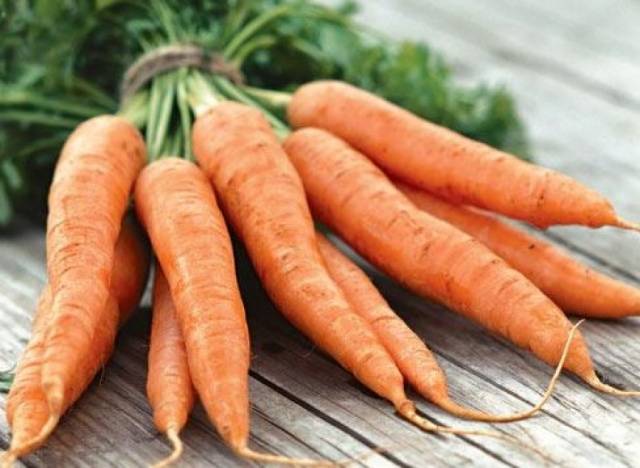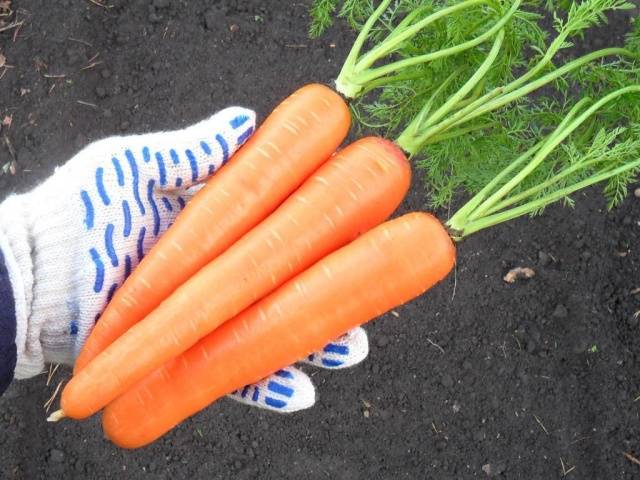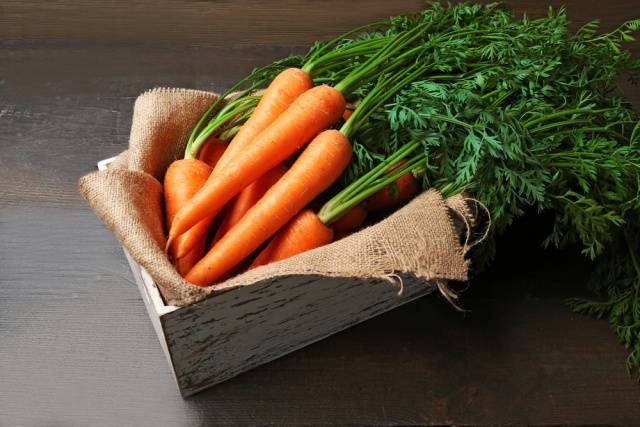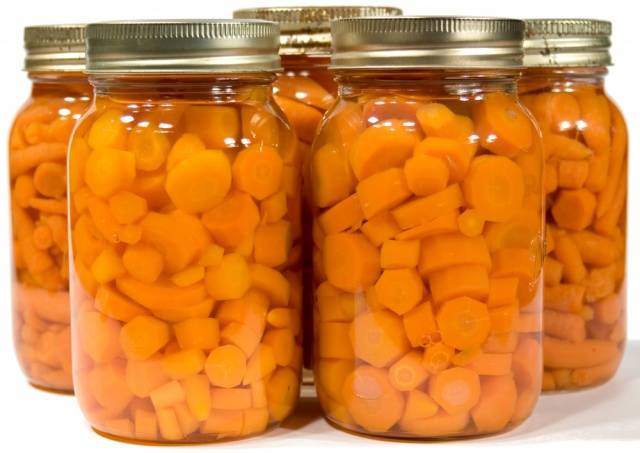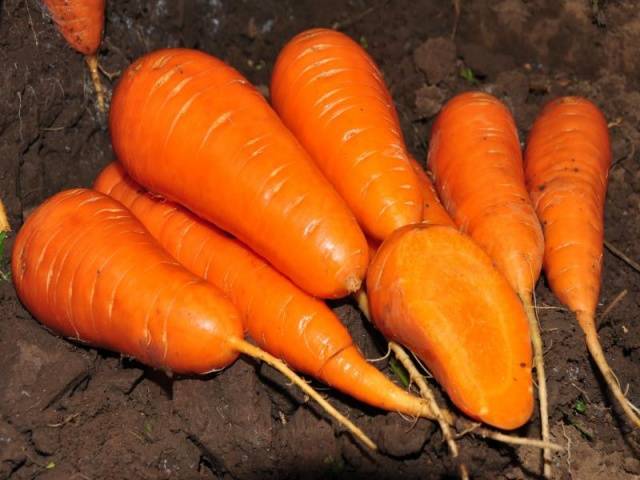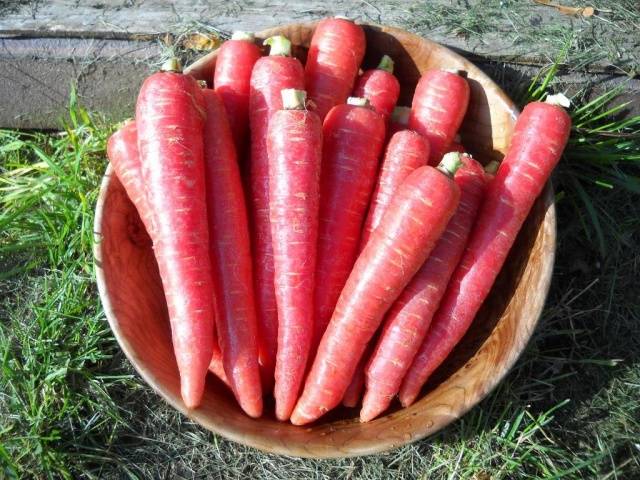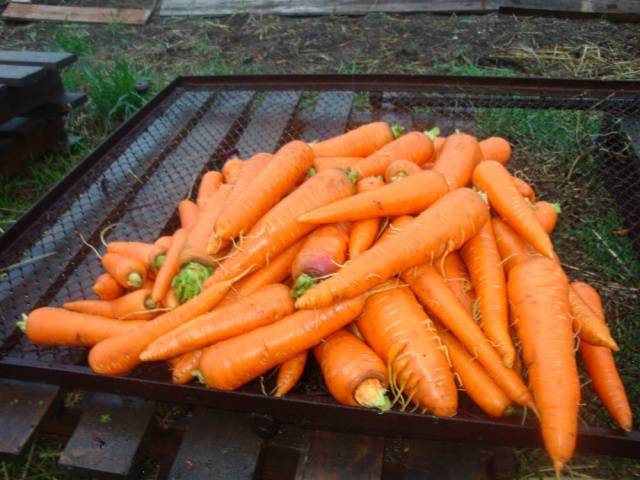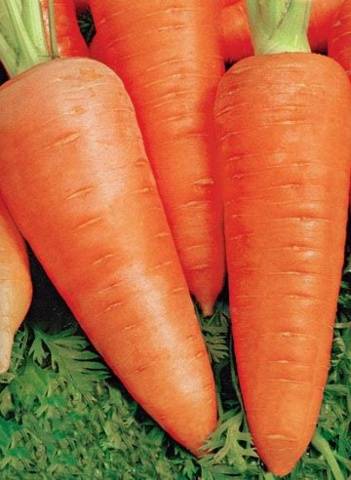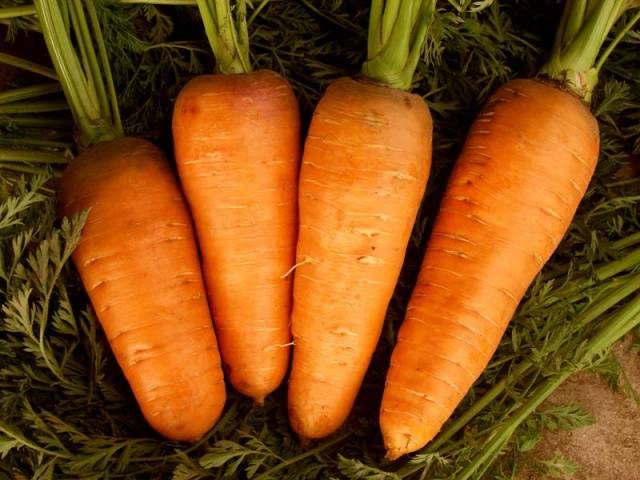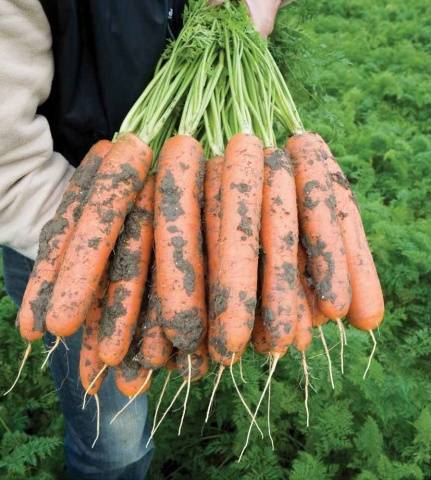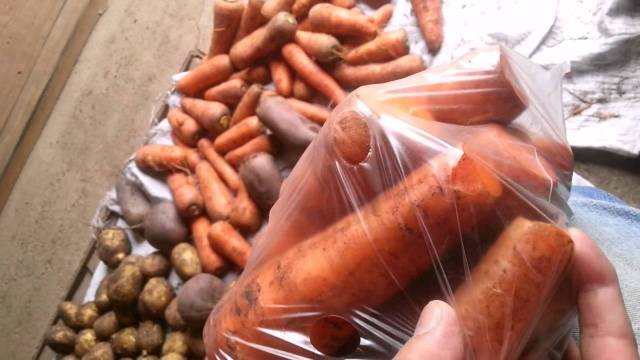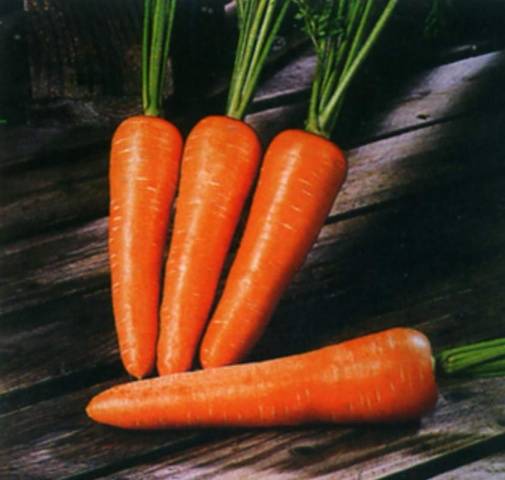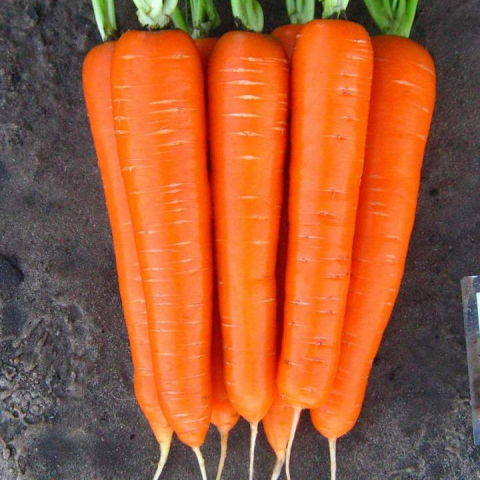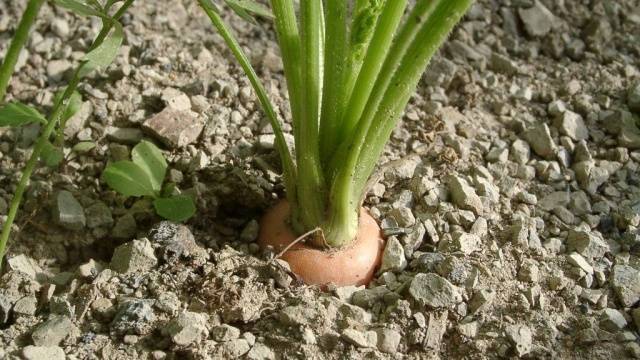Content
It is generally accepted that hybrid vegetables are somehow worse than varietal ones. At the same time, every gardener knows about the undeniable advantages of a hybrid (yield, resistance, and others). What kind of carrot seeds to buy for the next season: varietal or hybrid? This article will describe the advantages and disadvantages of each of these subspecies, and also consider the popular varieties and hybrids of carrots.
What is the power of a hybrid
Breeding scientists are engaged in breeding hybrids. Getting a new hybrid of carrots is not easy. To do this, you need to cross several varieties of vegetables, and do this for 7-10 seasons. Only after a few generations can you get a worthy hybrid of carrots with the best qualities of their "parents".
Hybrid carrot varieties good because they are created specifically for certain conditions. So, there are vegetables that are adapted to the southern climate, and there are those that can withstand even subzero temperatures and grow in the North.
In addition to climatic features, the hybrid can be "grafted" with yield, resistance to certain diseases, the ability to tolerate moisture or drought.
In general, the useful qualities of a hybrid look like this:
- higher productivity;
- resistance to diseases and pests;
- the best commercial qualities (color, shape, size of root crops);
- early ripening;
- less "capriciousness" in relation to growing conditions (watering, loosening, feeding);
- a short growing season (the harvest ripens in record time, which allows you to enjoy the vitamin and healthy vegetable earlier).
Why hybrid carrots are bad
Experienced gardeners and summer residents note that with all the advantages, hybrid carrots have their weaknesses... The disadvantages of hybrid varieties usually include:
- the worst taste;
- shorter shelf life.
However, even these few shortcomings are rather arbitrary. The modern assortment of seeds and varieties allows you to choose those that have no weaknesses.
This is not to say that some variety of hybrid carrots is bad, but some are good. Each of the hybrids was bred with a special purpose: early ripening, high yields or unpretentiousness.
Each gardener or farmer himself chooses what is more priority for him: to get a bountiful harvest in a short time and sell it or grow a fragrant late-ripening carrot that will last until the next season and will not lose its usefulness.
Early ripe carrots
The group of early ripe carrots includes varieties and hybrids that yield a harvest 70-100 days after the first shoots appear.
Early carrots can be harvested at the end of May - beginning of July, it all depends on the timing of sowing the seeds.
One should not rely on very abundant harvests of early ripe carrots - yield is not one of the strengths of such varieties. However, there are hybrids that give high enough (from 20 to 40 tons per hectare) yields, which makes it possible to successfully grow early maturing carrots for commercial purposes.
"Amsterdam"
Carrots of this variety can be harvested within 85 days after the first shoots appear. The fruits grow medium-sized - their weight rarely exceeds 75 grams, and the length reaches only 16 cm. The carrot is painted bright orange, the core also has this shade.
The root vegetable has an excellent taste: the pulp is juicy and crispy, sweet. The shape of the fruit is cylindrical, the tip is blunt.
This variety loves moisture and light soil, so the site must be carefully dug up or plowed before sowing seeds. With good care, about 6 kg of carrots can be harvested from each meter of the garden.
"Orange nutmeg"
One of the most demanded varieties - Orange Muscat carrots also belongs to the early ripening ones. Root crops are colored deep orange, their length reaches 20 cm, and their weight often exceeds 130 grams.
Carrots have practically no core - the pulp is homogeneous and juicy. The fruits are suitable both for fresh consumption and for canning. Such carrots can be stored, they are quite lying.
Sowing "Orange Muscat" is necessary in late April or early May. Leave at least 20 cm between adjacent rows, and after the emergence of seedlings, the plants are thinned out, the gaps between them should be about 5 cm.
With good care, the variety gives consistently high yields - up to 5.5 kg per meter.
"Minicor F1"
One of the early maturing hybrids that allows you to harvest 90 days after sowing the seeds. Root crops grow small, their weight reaches only 90 grams, and their length is 16 cm. The shape of the fruit is cylindrical, leveled. The color is orange.
This carrot is very tasty and healthy, it is recommended for baby and diet food.
Most often, this hybrid is grown for individual consumption, but you can also sell root crops of the Minicor F1 variety. The only thing is that the fruits cannot be stored for a long time, they quickly lose their presentation.
"Lydia F1"
The mid-early hybrid carrot ripens by the 100th day after the first shoots appear. Root crops are long - it can reach 30 cm. At the same time, the diameter of the fruit is small - up to 2.5 cm. The weight is also average - about 100 grams. The shape of the root crop is conical-cylindrical. Orange color.
They love the “Lidia F1” variety, first of all, for its taste - it is considered one of the most delicious. Vegetables can be canned, frozen or eaten fresh, but this type of carrot will not last long, so it is not suitable for long-term storage.
You need to plant a hybrid on high beds with nutritious and light soil. The climatic conditions of the south and center of the country are most suitable for her.
"Artek"
Another early ripe carrot variety. The fruits ripen very quickly - on the 65-85th day after sowing the seeds into the soil, they are distinguished by friendly growth.
Root crops are colored red-orange, have a cylindrical shape, the tip is slightly rounded. The weight of each varies from 80 to 140 grams, the length can reach 16 cm. The fruits are quite voluminous - the diameter is about 4 mm. The surface of the fruit is smooth, without large "eyes".
Carrots grow completely in the ground, have a large amount of carotene and a large core of bright orange color.
The variety is excellent for growing for sale - the commercial qualities of carrots are at an altitude. It can be planted not only in spring, but also in winter, then the harvest will appear very early.
"Belladonna"
Another popular variety of early ripe carrots is Krasavka. The fruits ripen on the 90th day after planting the seeds. A mature root vegetable is colored red-orange and has a large pith.
The shape of the carrot is conical, the surface is smooth. The fruits are considered large, their weight reaches 200 grams, and the length is 20 cm. The taste is good, they contain a lot of sugar and carotene.
Carrots are completely submerged in the soil, suitable for cultivation in the central and northern regions of Russia. The direct purpose of the variety is canning and fresh consumption. But "Krasavka" also tolerates long-term storage.
The high yield - more than 70 tons per hectare of land - makes it possible to grow this variety in farm fields, and not only in household plots.
"The Bureau"
A hybrid of foreign selection is considered ultra-early - you can harvest it as early as the 65th day after the emergence of carrots.
Root crops grow large - up to 19 cm long. Painted in bright orange color, the core is small. The shape of the carrot is conical, tapering towards the end.
Hybrid "Bureau" is distinguished by its high taste, it is recommended for fresh consumption. Also suitable for processing and canning.
"Fun"
The hybrid was selected for cultivation in the northern regions of the country. The ripening period of root crops is from 80 to 100 days.
The fruits grow large, their length often exceeds 20 cm, and the weight reaches 230 grams. The taste of carrots is juicy and sweet, and has a pleasant aroma.
The crop can be eaten fresh, processed or left in the basement for the winter. With timely watering from one meter of the garden bed, you can get up to 6 kg of vegetables.
Mid-season varieties
Planting mid-season carrots on the site means killing two birds with one stone. The family will be provided with fresh vegetables even in the summer, and such a carrot can be stored for a long time.
If the plot of land is large, then, of course, you can plant all types of vegetables (early, mid-season and late), each of them used for its intended purpose. In small areas, you can limit yourself to mid-season carrots. The growing season for such vegetables is from 110 to 130 days, which will allow harvesting even before the onset of autumn cold weather and frost.
Such carrots can be grown in any region: in the south, and in the center, and in the northern regions. Almost all varieties and hybrids are distinguished by high taste, can be used for processing or fresh consumption, as well as for long-term storage.
"Shantane"
The variety is rightfully considered one of the best. A mature crop can be harvested 110 days after germination in the beds.
Root crops have the shape of a truncated cone with a blunt end. The color of vegetables is deep orange. The weight of each fruit ranges from 90 to 230 grams, the length of the carrot is up to 14 cm, but the diameter is large enough - up to 6 cm.
With proper care from a square meter of land, you can collect about 9 kg of carrots. Its taste is considered the best: the pulp is juicy and crunchy, contains a lot of nutrients and vitamins, has a rich "carrot" aroma.
The crop can be processed in any way: consumed fresh, added to various dishes and salads, canned, stored in the winter.
The “Shantane” variety is not afraid of high soil moisture - root crops are not prone to cracking and rot.
"Parisian carotel"
The main quality of this mid-season variety is unpretentiousness. Carrots "Parisian Carotel" can be planted in any soil, they are not afraid of difficult climatic conditions.
Medium-sized root crops - weighing up to 120 grams, up to 13 cm long. The pulp has an orange tint that turns into red.
Sowing carrots in April to get an early harvest.If the seeds are planted in late May or early June, the roots will be more suitable for long-term storage. Another method of planting is in frozen soil, in late autumn. It is important to ensure that the seeds are dry when planted this way.
Callisto F1
The pride of domestic breeders is Callisto F1 carrots. The variety is distinguished by its excellent taste and long shelf life.
Mature root crops can be harvested 110 days after planting the seeds in the soil. The carrot has an elongated cone shape and a standard orange color. The inside of the fruit is reddish flesh with a narrow core. The mass of one root crop reaches 200 grams, the length is 20 cm.The carrots are up to 4 cm in diameter.
This variety contains a large amount of carotene, therefore it is recommended for children. The crop tolerates transportation and storage well until next spring.
"Alenka"
A mid-season carrot variety suitable for growing in fertile and loose soils. On poor, hard land, carrots will not yield a good harvest.
Root crops are large in size. A cylindrical vegetable has a blunt end. The weight of each carrot can reach 350 grams, and the length, most often, does not exceed 15 cm.
The color of the root vegetable is bright orange both inside and outside. The taste is excellent. From each square meter of land, you can get about 8 kg of vegetables.
Alenka carrots are distinguished by the fact that for a long period they retain not only a presentable appearance, but also juicy pulp, and all useful substances.
Calgary
The Dutch hybrid belongs to the mid-season, ripe fruits can be harvested 120 days after sowing the seeds. The variety is most suitable for cultivation in the central part of Russia.
Fruits are medium in size and have a thick cone shape. The weight of each root crop ranges from 80 to 180 grams. The peel and core are colored in the same color - orange.
Hybrid carrots "Calgary" are appreciated for their high yield (up to 60 tons per hectare), excellent taste, good keeping quality. This variety is suitable for industrial cultivation and mechanized harvesting.
"Kamaran"
Another hybrid Dutch selection gives consistently high yields, which can be harvested on the 132nd day after sowing seeds into the soil.
With good care and timely watering, you can get up to 43 tons of crops; you can grow a crop in the central and northern parts of the country.
The root crop has a standard shape and color, is medium in size - weighing up to 130 grams.
The fruits are resistant to cracking, too dry or too moist soils are not dangerous for the hybrid. The variety is suitable for growing in large farm fields and for mechanized harvesting.
Late-ripening varieties
As a rule, all late-ripening crops have the longest growing season. I.e, they need not only to be sown later than others, but such crops will also take longer to ripen.
You can choose late-ripening varieties for those summer residents and gardeners who plan to eat raw vegetables until next spring. Such carrots will retain most of the nutrients, remain juicy and tasty.
but not all regions of Russia can grow late-ripening carrots... The growing season for such varieties takes from 130 to 150 days, therefore, in a short summer, it simply does not have time to ripen.
It is best to grow late-ripening carrots in the southern and central regions with long and warm summers.
Late carrots contain the largest amount of carotene and vitamins. Such root vegetables are better than others stored in the winter period, and have high taste.
Boltex
Hybrid carrots ripen on the 130th day after sowing the seeds into the soil. Differs in excellent taste and high productivity - with good watering, it will be up to 7 kg per square meter.
Root crops are cone-shaped, painted in a deep orange color. The length of each is 13 cm, and the weight can reach 330 grams.The taste of carrots is very high.
Root crops of this hybrid are suitable for fresh consumption, canning and long-term storage.
"The Autumn King"
The variety is most suitable for canning or long-term storage. Carrots contain a large amount of carotene, which remains in the fruit until spring.
Root crops are spindle-shaped with a blunt end, colored in an orange tint. The mass of each vegetable reaches 180 grams.
Depending on the composition of the soil and growing conditions, from each square meter of land, you can get from 4 to 8 kg of the crop.
"Sirkana F1"
Good hybrid for commercial cultivation. Root crops are approximately the same in size, the yield is about 6 kgm² of the plot. It takes about 135 days to fully ripen the fruit.
The ripe fruit is colored orange, both outside and inside. The shape of the root crop is cylindrical, the size is large. The mass of each carrot lies in the range of 70-140 grams. The length reaches a maximum of 20 cm.
The hybrid is unpretentious to the composition of the soil - in any conditions it gives a stable harvest. Suitable for growing before winter, can withstand frosts down to -4 degrees.
Carrot "Sirkana F1" contains a large amount of carotene, can be used in any way, including suitable for long-term storage - up to 8 months.
Conclusions and recommendations
Each carrot hybrid has its own strengths. Choosing the best one, you need to analyze the conditions for growing a vegetable, as well as determine the purpose of the crop.
For each region of Russia with a specific climate, there is a special hybrid of carrots - and more than one. It is preferable to buy seeds of just such adapted varieties. Then the yield will be at the level, and the vegetables will be better stored.
